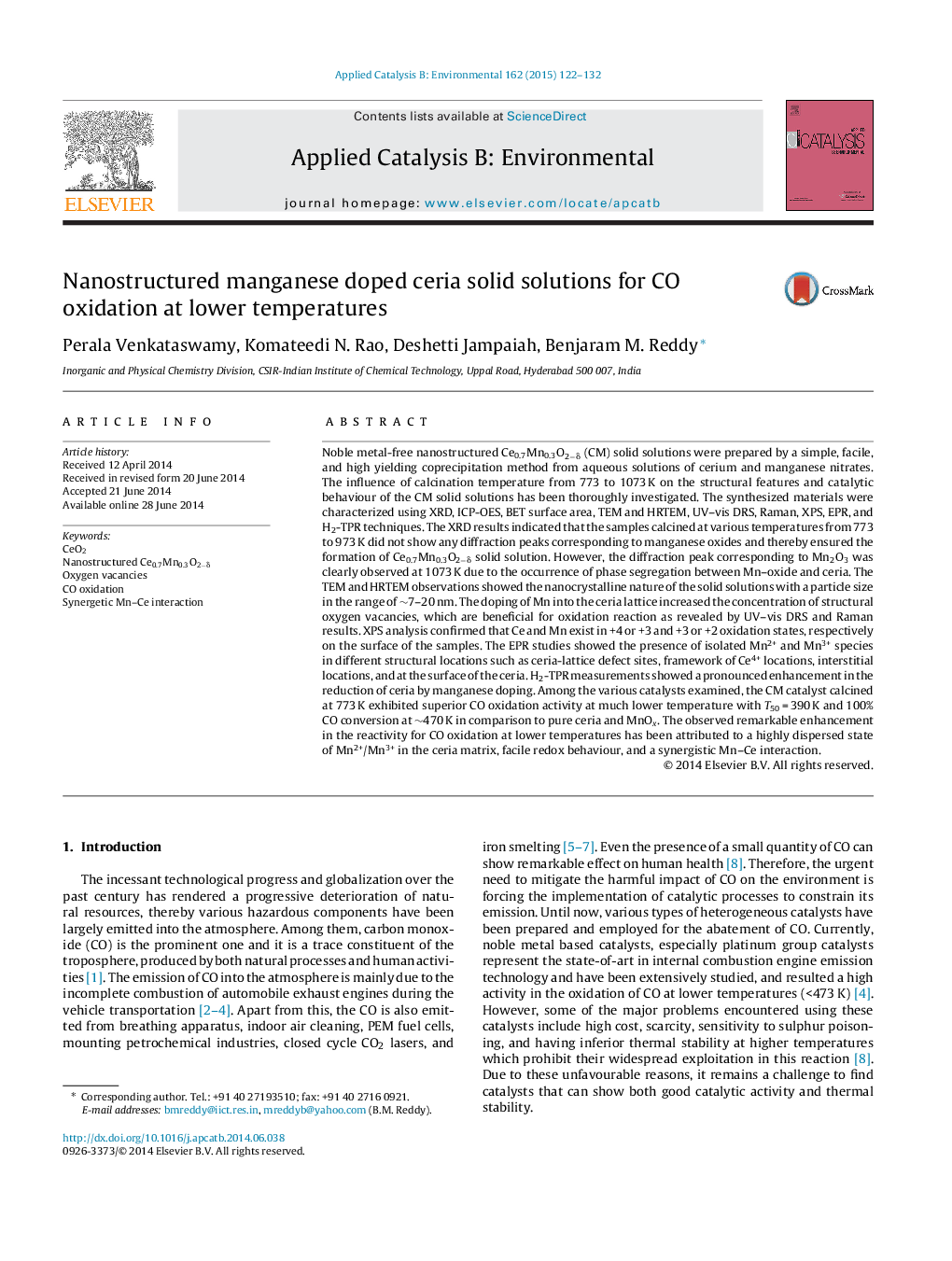| Article ID | Journal | Published Year | Pages | File Type |
|---|---|---|---|---|
| 45628 | Applied Catalysis B: Environmental | 2015 | 11 Pages |
•A facile coprecipitation is reported to make nanostructured Ce–Mn–oxides.•Doping of Mn cations into ceria lattice enhances oxygen defects.•Mn cations doped ceria reduces at lower temperatures.•Mn dopant promotes thermal stability of ceria.•Ce–Mn–oxide solid solution shows superior CO oxidation activity.
Noble metal-free nanostructured Ce0.7Mn0.3O2−δ (CM) solid solutions were prepared by a simple, facile, and high yielding coprecipitation method from aqueous solutions of cerium and manganese nitrates. The influence of calcination temperature from 773 to 1073 K on the structural features and catalytic behaviour of the CM solid solutions has been thoroughly investigated. The synthesized materials were characterized using XRD, ICP-OES, BET surface area, TEM and HRTEM, UV–vis DRS, Raman, XPS, EPR, and H2-TPR techniques. The XRD results indicated that the samples calcined at various temperatures from 773 to 973 K did not show any diffraction peaks corresponding to manganese oxides and thereby ensured the formation of Ce0.7Mn0.3O2−δ solid solution. However, the diffraction peak corresponding to Mn2O3 was clearly observed at 1073 K due to the occurrence of phase segregation between Mn–oxide and ceria. The TEM and HRTEM observations showed the nanocrystalline nature of the solid solutions with a particle size in the range of ∼7–20 nm. The doping of Mn into the ceria lattice increased the concentration of structural oxygen vacancies, which are beneficial for oxidation reaction as revealed by UV–vis DRS and Raman results. XPS analysis confirmed that Ce and Mn exist in +4 or +3 and +3 or +2 oxidation states, respectively on the surface of the samples. The EPR studies showed the presence of isolated Mn2+ and Mn3+ species in different structural locations such as ceria-lattice defect sites, framework of Ce4+ locations, interstitial locations, and at the surface of the ceria. H2-TPR measurements showed a pronounced enhancement in the reduction of ceria by manganese doping. Among the various catalysts examined, the CM catalyst calcined at 773 K exhibited superior CO oxidation activity at much lower temperature with T50 = 390 K and 100% CO conversion at ∼470 K in comparison to pure ceria and MnOx. The observed remarkable enhancement in the reactivity for CO oxidation at lower temperatures has been attributed to a highly dispersed state of Mn2+/Mn3+ in the ceria matrix, facile redox behaviour, and a synergistic Mn–Ce interaction.
Graphical abstractFigure optionsDownload full-size imageDownload as PowerPoint slide
